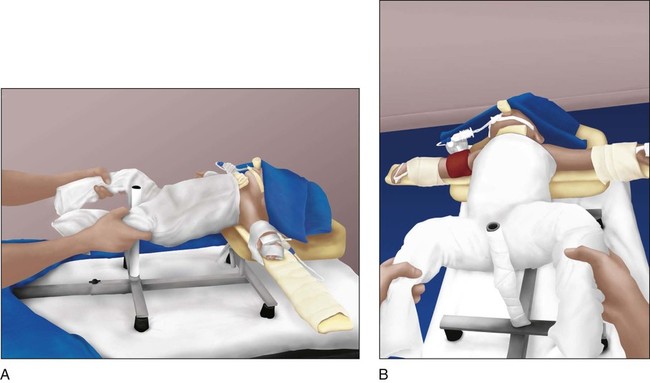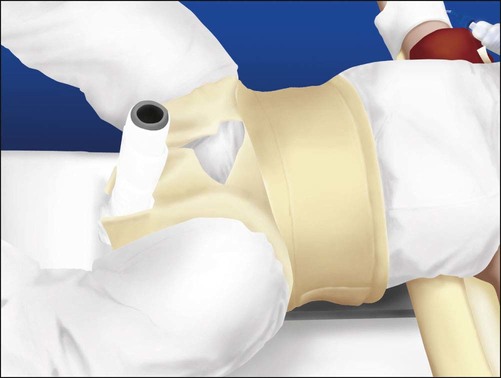• Proximal-third fractures can be hard to maintain. The proximal fragment tends to be abducted and flexed by the insertion of the muscles at the trochanters. • Middle-third fractures tend to fall into varus and external rotation. A valgus mold is important to resist this deformity. • For fractures of the distal third of the femur, the gastrocnemius tends to pull the fracture into recurvatum. Flexing the knee takes tension off the muscle and helps to maintain the reduction.
Femur Fracture
Closed Reduction and Spica Cast
Examination/Imaging
 As with any case of trauma, it is important to evaluate the entire patient.
As with any case of trauma, it is important to evaluate the entire patient.
 The neurovascular status of the extremity should be documented
The neurovascular status of the extremity should be documented
 The location of the fracture on radiographs in relation to the shaft of the femur influences external treatment and the method of reduction.
The location of the fracture on radiographs in relation to the shaft of the femur influences external treatment and the method of reduction.
 The radiograph should be reviewed carefully for any signs of bone tumor.
The radiograph should be reviewed carefully for any signs of bone tumor.
 If there is any indication of child abuse, a bone survey looking for additional fractures in various stages of healing can be ordered.
If there is any indication of child abuse, a bone survey looking for additional fractures in various stages of healing can be ordered.
Anatomy
 In order to perform the appropriate reduction and mold the cast, it is important to remember the muscles forces acting on the fracture.
In order to perform the appropriate reduction and mold the cast, it is important to remember the muscles forces acting on the fracture.
Positioning
 The patient is placed supine on a radiolucent table (Fig. 1A and 1B).
The patient is placed supine on a radiolucent table (Fig. 1A and 1B).

 A spica table is prepared with padding of the central perineal post (Fig. 2).
A spica table is prepared with padding of the central perineal post (Fig. 2).

 The position of the leg is dependent on the location of the fracture. General guidelines for leg positioning are as follows:
The position of the leg is dependent on the location of the fracture. General guidelines for leg positioning are as follows:
Stay updated, free articles. Join our Telegram channel

Full access? Get Clinical Tree















